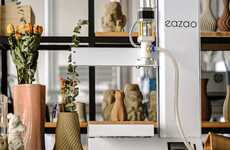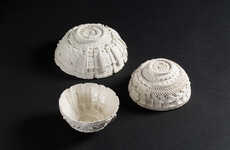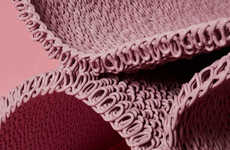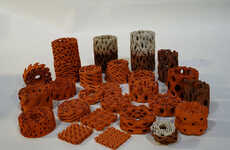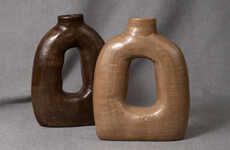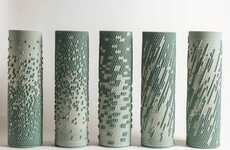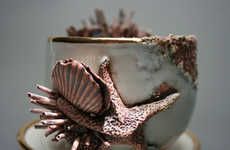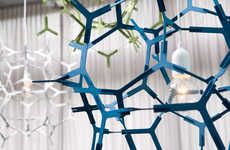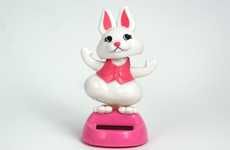
The Catenary Pottery Printer Produces Bowls in Sagging Fabric
Amelia Roblin — November 6, 2013 — Art & Design
Reading the name "Catenary Pottery Printer," you might be inclined to expect a cutting-edge device that excels in the unique production of crockery. You will see, however, that this process is of the manual sort, requiring meticulous craftsmanship and plenty of hands-on time in the making.
Dezeen Magazine describes the method as an "analogue version of parametric design." The Great Things to People (gt2p) studio has assembled a wooden frame and suspended a piece of fabric from its top from all four corners. With plenty of slack, the cloth of the Catenary Pottery Printer sags deeply, creating a soft concave space. Clay is poured into this material mold, then gently squeezed out from the top and bottom. This finally produces one-of-a-kind bowls, dishes and vases that have delicate ruffled edges.
Dezeen Magazine describes the method as an "analogue version of parametric design." The Great Things to People (gt2p) studio has assembled a wooden frame and suspended a piece of fabric from its top from all four corners. With plenty of slack, the cloth of the Catenary Pottery Printer sags deeply, creating a soft concave space. Clay is poured into this material mold, then gently squeezed out from the top and bottom. This finally produces one-of-a-kind bowls, dishes and vases that have delicate ruffled edges.
Trend Themes
1. Analog Parametric Design - Embracing the manual process of parametric design, there is an opportunity to create unique and custom products.
2. Fabric Mold Technology - Using fabric molds for ceramics opens up new possibilities for creating distinctive and elegant pieces.
3. Soft Edged Pottery - The production of bowls and vases with delicate ruffled edges is a trend that adds a touch of artistic elegance to traditional pottery.
Industry Implications
1. Ceramics - The ceramics industry has an opportunity to experiment with fabric molds and incorporate analog parametric design in their manufacturing processes.
2. Art and Design - Artists and designers can explore the use of fabric molds and soft-edged pottery to create unique and visually captivating pieces.
3. Craftsmanship - Manual craftsmanship can be enhanced by integrating fabric molds and analog parametric design, allowing artisans to create truly one-of-a-kind products.
2.4
Score
Popularity
Activity
Freshness


